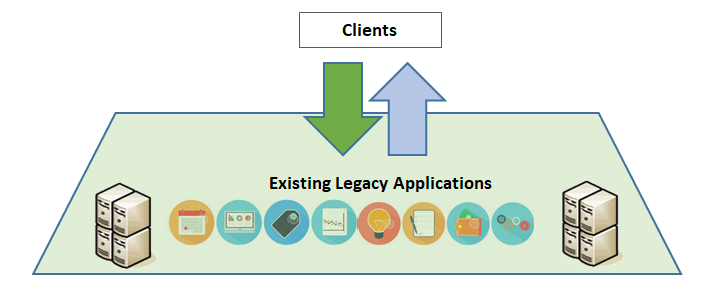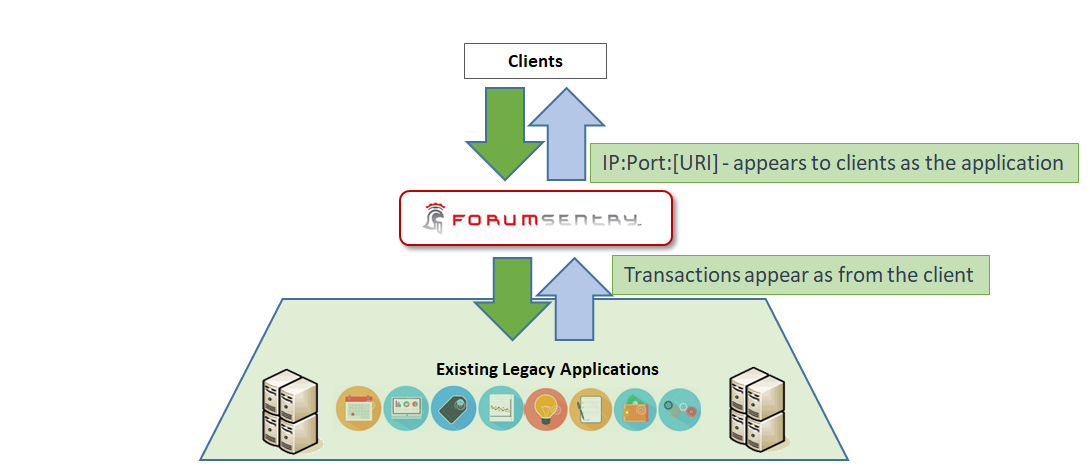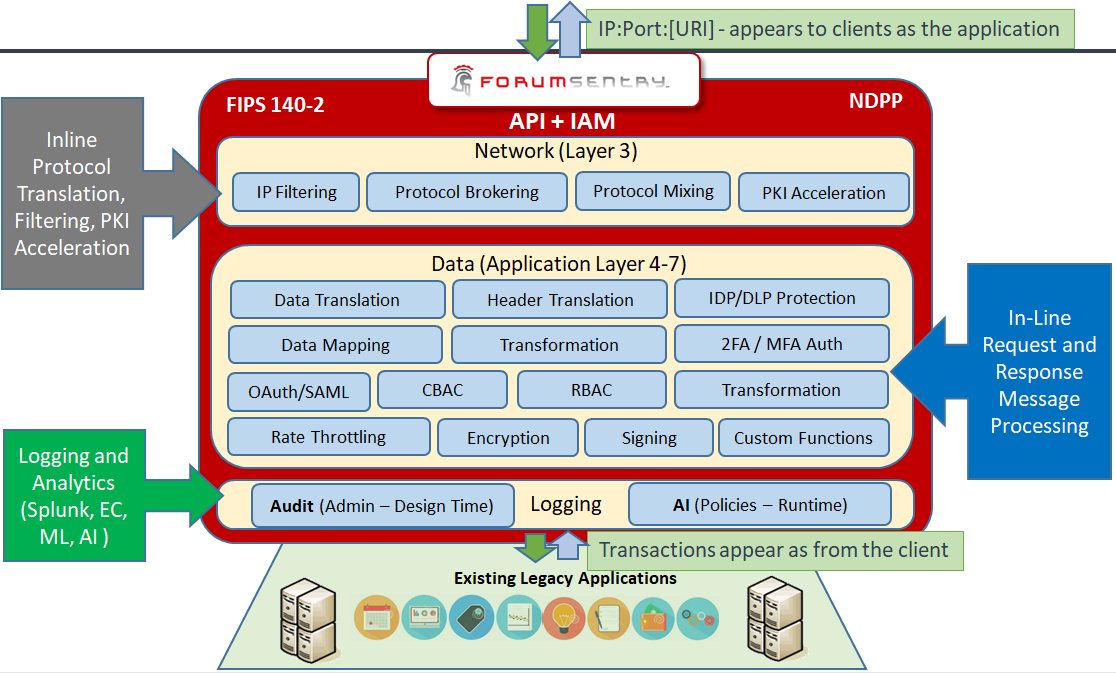Legacy Modernization

Legacy Modernization
Seamlessly Integrate Legacy and Modern Applications | No Agents or Adapters | No Application Coding Changes
Legacy Application Modernization Challenges
Standard Legacy Applications are accessed directly and thus can only support protocols, message formats, and authentications that the legacy applications were designed with. Modernizing with code and platform updates is cumbersome, costly, and often impossible due to platform and architecture limitations.

Deploy Virtual Abstraction to Prepare for Modernization
Using Forum Sentry specialized technology that can transparently broker communications to and from the legacy application, the clients will still communicate to the application (brokered transparently by Sentry) and the application will still communicate to the client (brokered transparently by Sentry).
To redirect the existing communication flow, update the DNS entry for the application, or update the firewall/load balancer Virtual IP (VIP) to point to Sentry.
Once these flows are in place, the modernization of the information flows becomes much easier as it becomes simple policy enablement of Sentry capabilities.

Modernize Legacy Applications via Transparent Virtual Layer
Once the virtual brokering is in place, Sentry is configured for policy tasks to be performed on the requests and responses for each legacy application. Sentry has built-in modules for hundreds of different processing scenarios which can be enabled through simple policy task flow configuration. Once the policy flows are configured, Sentry will then seamlessly perform the protocol and message brokering of requests/responses according to each application policy flow.

Forum Sentry Agentless Technology vs Agent-Based Technology
In many modernization initiatives, it requires agents or adapters to be installed on the end-point applications or services. This is not a requirement for the Forum Sentry solution. Forum Sentry is an agentless solution with built-in capabilities for integration to the clients and services via protocol and message brokering. Thus, the processing of information flows for the request and response occurs within Sentry, not on the clients or services. This dramatically reduces the burden of changes on the clients and applications as the changes only require a DNS change or a Load Balancer/Firewall VIP update to make the Sentry become the same endpoint that was the application. The client thinks it is still communicating directly to the application, and the application thinks it is still communicating directly with the client. Sentry is performing the seamless brokering and applying the modernization technology capabilities (noted below) per each configured legacy application flow. There can be many different applications supported at once with different policy settings and translation capabilities unique to each.
Where to Deploy Sentry?
Sentry works as a works as a protocol broker intermediary. This means that the TCP connections are brokered to and from Sentry for each application that Sentry is configured for. Thus, the deployment scheme as to where Sentry is deployed is completely flexible. Often Sentry is deployed as its own ‘node’ in the network. This allows a clean abstraction layer in the network to perform the brokering tasks. However, Sentry can also be installed directly on the application and can broker the TCP connections via loopback (127.0.0.1) to the application.
Sentry Deployment Variants
Forum Sentry is provided in various form factors to enable customers to deploy Sentry capabilities in any computing environment. The 2 main types of Form factors are images and software installations. All variants are stand-alone and have no 3rd party dependencies.
The image variants include:
- Amazon AMI image
- Azure Image
- VMWare Image
- Docker Image
The software variants are used to install on customer’s OS platforms. This is a single-package installer and includes all capabilities of Sentry. These variants include:
- Linux Software
- Windows Software
Legacy Modernization Key Technology Capabilities
Forum Sentry built-in message and protocol processing modules enable applications and services to be instantly modernized via a virtual abstraction layer which can provide the translation capabilities to seamless enable your legacy systems and applications to be integrated with modern technologies, access cloud APIs, provide modern authentication, enable centralized transaction monitoring, and much more.
Mediation and Transformation
Convert message formats XML, JSON, SOAP, HTML, CSV, FILE Granular data mapping XSLT Processing
Attribute Mapping and Extraction
HTTP Headers Request/Response Message Content (XML, JSON, etc) IdM Repositories (LDAP, AD, etc), Databases, APIs
Protocol Mixing
In-Line conversion of protocols TLS 1.3 HTTP, SFTP, AMQP JMS Database
Authentication
2-Factor Authentication (2FA) Multi-Factor Authentication (MFA) Multi-context Authentication (MCA)
Flow Control
Dynamic remote routing Remote system failover Load balancing Redirects
Encoding, Digests, and Strings
BASE64, URL, Hex, Binary Extensible encoding processing URI and Data rewriting
Auditing and Logging
Transaction audit trail Machine Learning log format
Would you like to learn more?
Contact us for more information or to schedule a live demonstration.